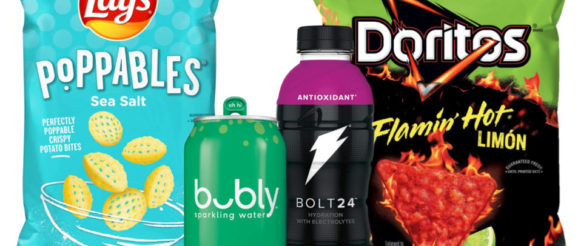Data driving PepsiCo’s efficiency and innovation efforts

BOCA RATON, FLA. — PepsiCo, Inc. is investing in its data analytics capabilities to stay ahead of the evolving consumer marketplace, said Hugh F. Johnston, chief financial officer, during the company’s Feb. 20 presentation at the Consumer Analyst Group of New York conference. As an example, he said PepsiCo is digitizing its marketing and consumer insights efforts.
“By enhancing our ecosystem of data and consumer insights, we can increase the efficiency of our promotions and become more dynamic with our A&M (advertising and marketing) spending, in effect, getting more growth for the same spend,” he said. “This includes leveraging our in-house automation capabilities to deploy targeted higher R.O.I. (return on investment) marketing programs in a manner that’s both efficient and scalable.”
With algorithms the company continues to “train,” Mr. Johnston said the company is improving marketing R.O.I. on a continuous basis.
“We can tailor and target ads with greater precision, optimizing the R.O.I. of individual campaigns or of the digital elements of the media mix and building a single view of the consumer by integrating consumer data from various sources, such as C.R.M. data, brand sites, cookie and I.D. data as well as second-party and third-party assets,” Mr. Johnston said. “By capturing and analyzing more granular consumer-level data, we can understand the consumer in a more individualized way to both customize communication and execute in every store with precisely the right products in the right location at the right price.”
The investments in improved data analytics are rippling throughout the organization and affecting all aspects of the business. In innovation, the company is using data driven predictive analytics to improve cycle times and drive more incremental innovation beyond line and flavor expansions. Examples cited by Mr. Johnston included the introductions of Lifewtr and bubly in the water category, enhancing the Lay’s brand with Poppables and extending the Gatorade brand with the introductions of Zero and Bolt24.
E-commerce made up $2 billion in retail sales for PepsiCo last year. Mr. Johnston said e-commerce is transforming how the company does business and is providing insights and learnings that are being leveraged throughout the company.
“Through e-commerce, we can actually talk to an individual consumer much more directly and we can actually create demand with that consumer much more directly,” he said.
Using PepsiCo’s Sun Chips brand as an example, Mr. Johnston said the brand often gets lost in the shadow of the company’s much larger snack brands.
“By virtue of sort of having a relationship with you, either directly or a relationship with you through our e-commerce partners and our customers, we can actually much more effectively understand what your needs are and deliver basically advertising, pricing, product, some way to reach you to prompt that purchase of Sun Chips,” he said.
When asked by an analyst what of the company’s initiatives will help PepsiCo address unmet consumer needs five years from now, Mr. Johnston returned to the topic of analytics and consumer data.
“The thing that’s going to give us the most insight is going to be sort of understanding individualized consumer data,” he said. “That’s something that we do now, but we still do it, I think, in a more, call it, a more intuitive way. I think, again, when you combine the intuition with a much deeper understanding of what consumers are not just saying they want, but indicating they want even though they’re not saying it, I think it will enable us to innovate much more effectively.”
